Among the many Tang Dynasty relics in the Xinjiang Museum's History Hall, two painted clay women figurines on horses are particularly attractive: "Horse and Female Rider". One is from Turpan Astana Tomb No. 187, excavated in 1972, showing a woman with dignified features, wearing a Wei Mao (帷帽), holding the reins in her left hand and sitting on top of a saddle, a typical image of a noblewoman riding a horse at that time.
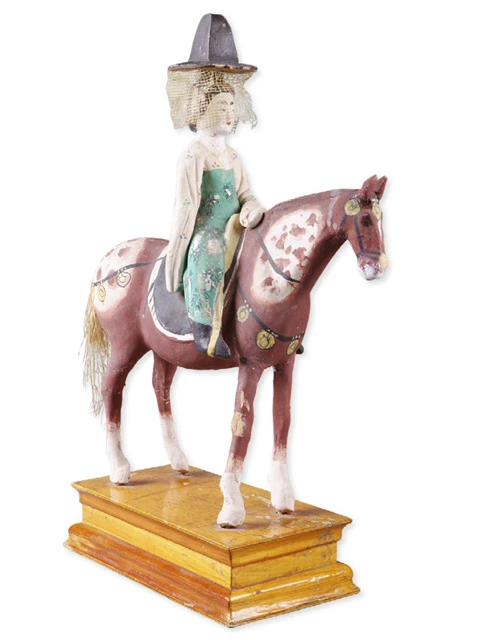
The other figurine was excavated in 1973 from Turpan Astana Tomb No. 216 and shows a woman riding a red horse with white skin and red lips, wearing a Wei Mao, which is quite charming.
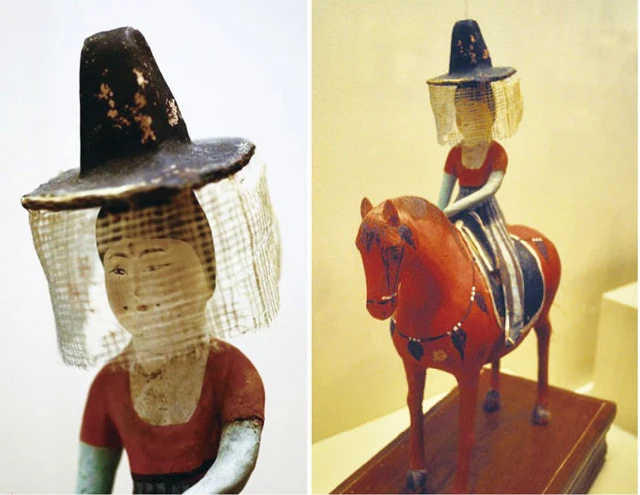
Looking at these two figurines of ladies, we can see a scene in our mind: in the city of Gaochang more than a thousand years ago, during the early spring, several fashionable Tang dynasty women wearing Wei Mao and riding their horses slowly, the ladies seem to be talking about something; and not far away, under the pavilion, a noblewoman with a graceful physique is concentrating on playing Go.
Mysterious underground history museum
Astana is known as the "Underground Museum of Turpan", the ancient tombs are located in the northern suburbs of Gaochang City, Turpan, in the Gobi desert. The tombs date from the Western Jin Dynasty to the middle of the Tang Dynasty. The main owners of the tombs are Han Chinese, while Jushi Kingdom, Turkic, and Xiongnu peoples are buried. The tombs of Astana were buried by noblemen, powerful generals, civilians, and lowly soldiers, and were the public cemetery of the Gaochang state at that time.
The scarce precipitation and dry climate in the Astana area have enabled the preservation of many precious organic artifacts to this day. Before the Song Dynasty, the Gaochang region was a famous center for the spread of Chinese culture in the eastern part of the Western region, and the influence of the Chinese Han culture in this region was remarkable, as represented by the large number of clay figurines of different shapes and colors excavated from the Astana burial site, which are evidence of the western transmission of the figurine and painting art styles in the Tang Dynasty, and also contain and reflect the unique makeup and costumes of ancient women.
The figurines unearthed at the Astana burial site are numerous, and varied in shape, color, and texture. Among them, the wooden and clay figurines are unique and striking. Most of the Astana clay figurines are shaped in accordance with the principles of painting, more like a painting than a figurine. The Astana clay figurines were not fired, but completely shaped in mud, painted with various colors and ornaments, and left to dry naturally in the tombs, while the figurines excavated in eastern China were mostly fired.
Basic hanfu costume of "Horse and Female Rider"
At that time, under the effective management of the Tang government, the Western region, with the socio-economic development and the smooth flow of the Silk Road, also showed a colorful appearance of clothing. The clay figurines "Horse and Female Rider" unearthed from Astana tombs reflecting women's lifestyle in the western region during the Tang Dynasty are colorful and unprecedented.
In terms of hairstyles, there is a wide variety of hairstyles for Western women in the Tang Dynasty depending on their status, age, and occasion of attendance, but the hairstyles of these two figurines of women on horseback are not complicated, and should be straightforward to put hair into a bun and fix it on top of the head, which is more convenient for wearing a Wei Mao.
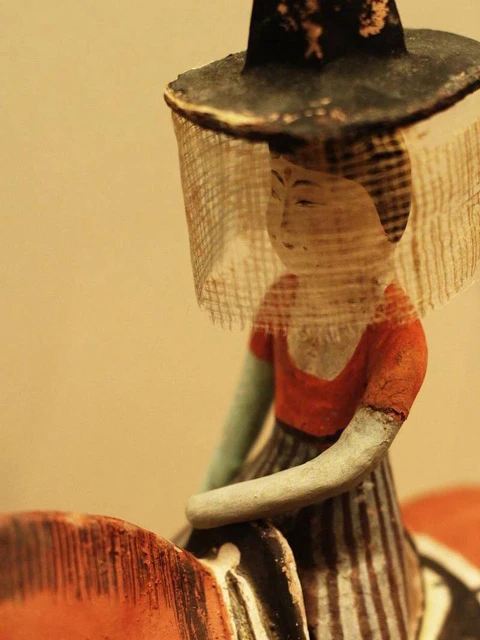
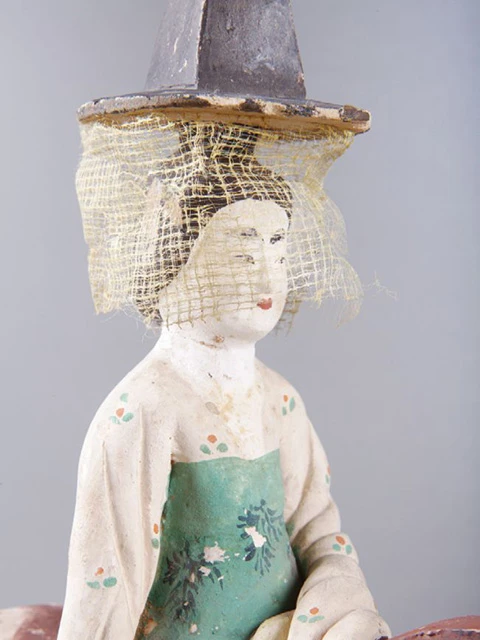
In ancient China, there were more sandy winds in the northwest, and women in the western region liked to wear a headdress Wei Mao to shelter from the sandy winds. Wei Mao's main frame is a hard rattan for the skeleton, taut fabric on the top, and then add a circle of net yarn along.
In the mid-Tang period, especially during the reign of Wu Zetian, the social atmosphere became increasingly open, and Wei Mao, a headdress that flaunts female individuality, became increasingly popular among young women, and was also prevalent in the Central Plains, with both palace and folk women vying to emulate it.
These two painted clay women figurines on horses reproduce the scene of a woman wearing a Wei Mao in the western region of Gaochang at that time, fully demonstrating the unique elegant and dignified temperament and colorful appearance of women in the western region of the Tang Dynasty.
The elegance in richness and grace is unique to the women of the Tang Dynasty. The prosperity of society blossomed on those fancy faces, which were enchanting. On some of the more complete female figurines of the Tang Dynasty, we can see that women's make-up in the Tang Dynasty was dense, bold, luxurious, and innovative.
The importance attached to make-up by the western women of the Tang Dynasty was also unprecedented, as they maintained the style of their region on the one hand and were influenced by the culture of the Central Plains on the other. The female figurines reproduce the colorful make-up customs of western women in the Tang Dynasty. Apply powder, rouge, draw eyebrows, paste Hua Dian (花钿), Mian Yan (面靥), paint Xie Hong (斜红), and apply lipstick. Every detail is reflected in the makeup.
There are many different types of women's clothing in the Tang Dynasty, but there are three main types: narrow-sleeved shirts with long skirts, Hu costumes, and women wearing men's clothes. The two female figurines both belong to the first type, i.e. narrow-sleeved shirt with the long skirt, wearing a Pi Bo (披帛), and adding a Ban Bi (半臂, short sleeves shirt).
The figurine "Horse and Female Rider" of Turpan Astana Tomb No. 216 is dressed in a close-fitting, narrow-sleeved shirt with a large neckline and a hemline tied around the waist, and a long black and green skirt underneath, revealing the woman's delicate figure. What is worth mentioning is that, from the overall costume of the female figurines, the red short sleeves worn on the upper body should be outside the green tight-fitting tunic, reflecting from the side the open-mindedness of the society and the openness of fashion at that time, which is the embodiment of the brave spirit of Tang Dynasty women to express their beauty. This dress style is the inheritance, development, and perfection of the previous generation's clothing. From the overall effect, the top was short and the skirt was long, which made the body look slim and long, and was therefore loved by young women.
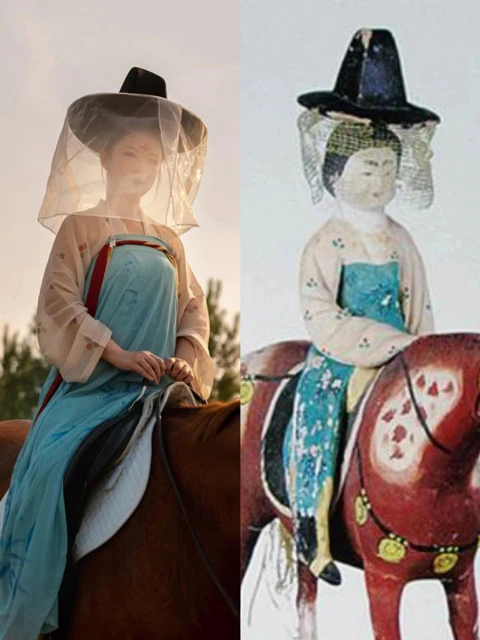
As a product of its time, the Tang Dynasty painted clay women figurines excavated from the Astana tombs inevitably reflect the style of the times and the unique aesthetic and cultural characteristics of the Tang Dynasty. The Silk Road, as a bridge between the East and the West, also reached unprecedented prosperity during this period. Under such a background, the life of Tang women, especially noble women, showed a kind of Tang meteorology everywhere. They not only dressed up their beautiful lives with gorgeous clothes, beautiful makeup, and exquisite ornaments, but also were enthusiastic about politics, pursued themselves.
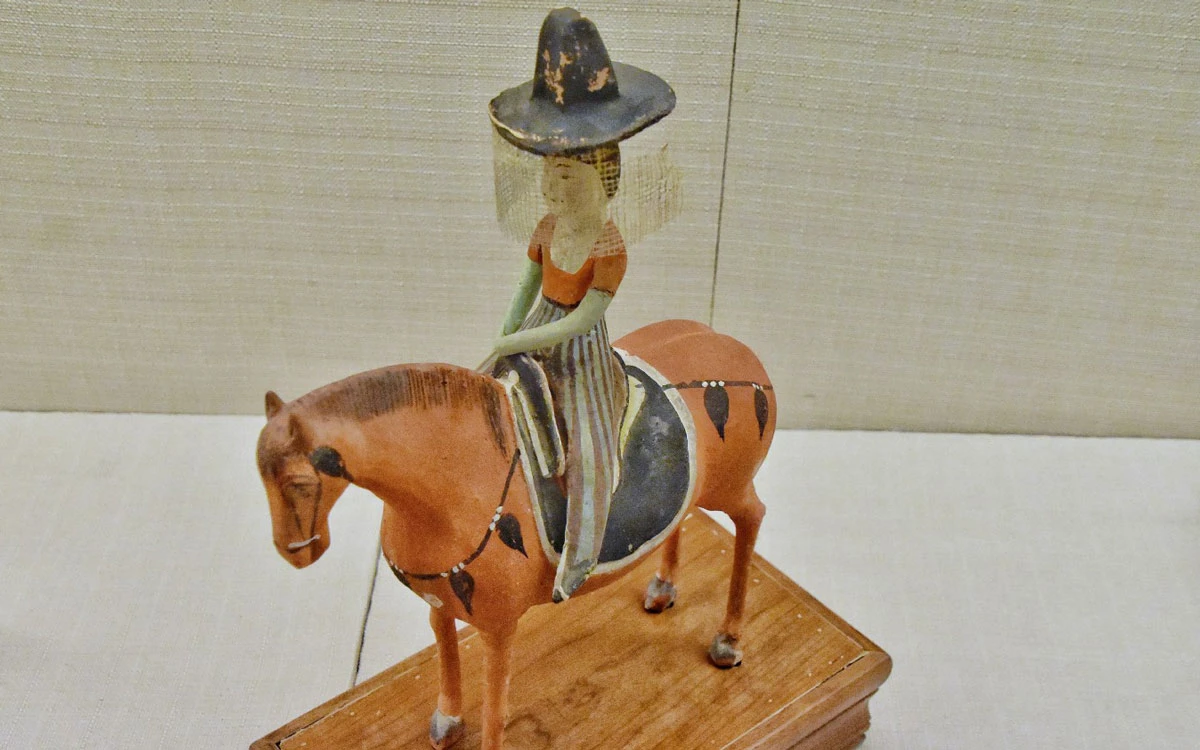
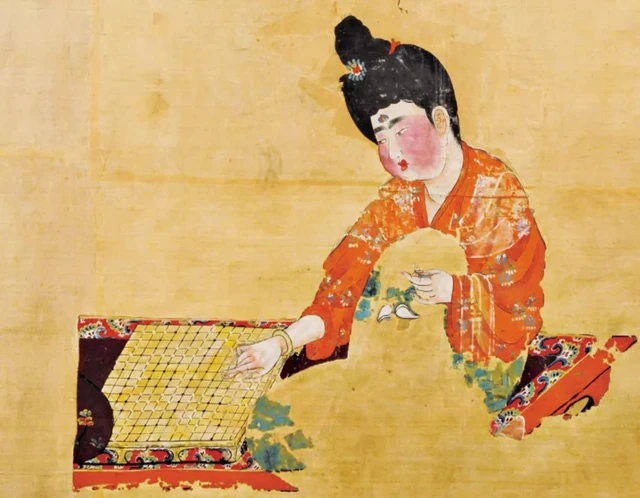
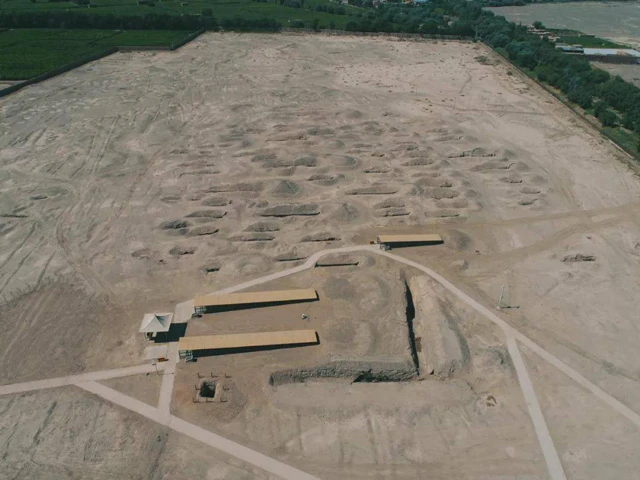

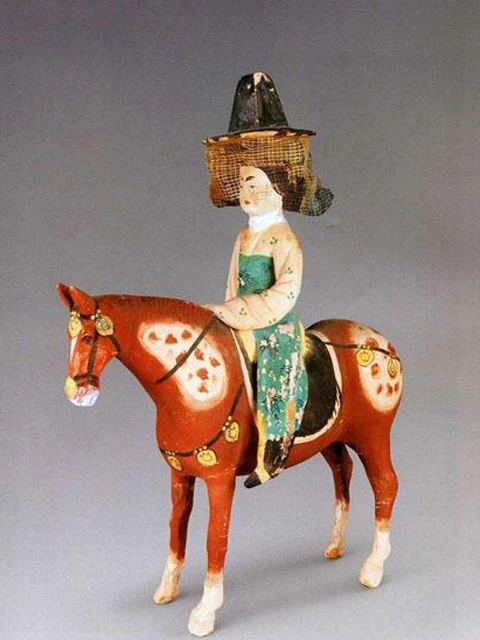
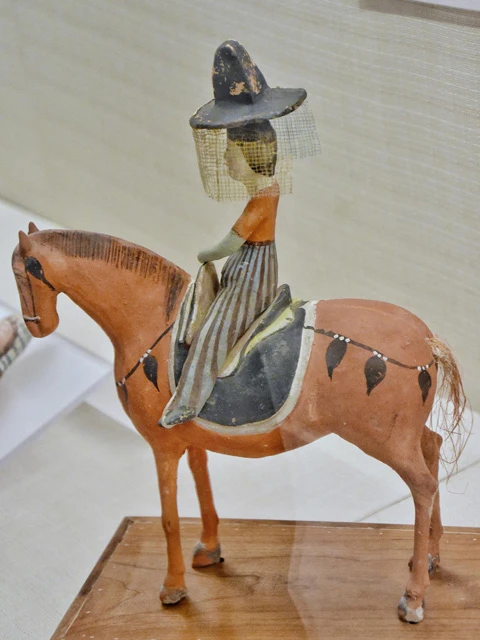
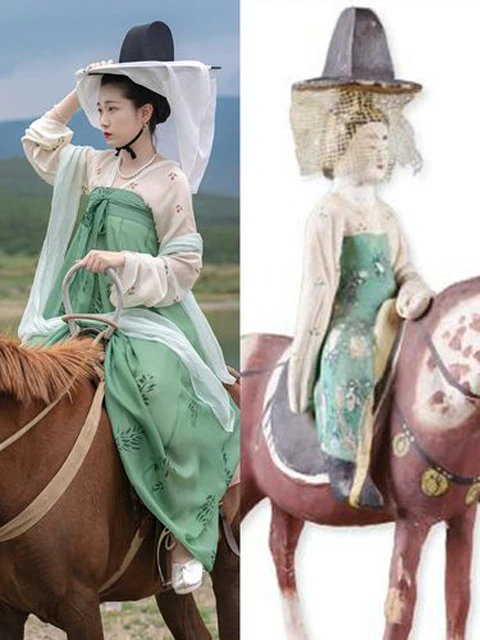


Thank you for articel
Its amazing